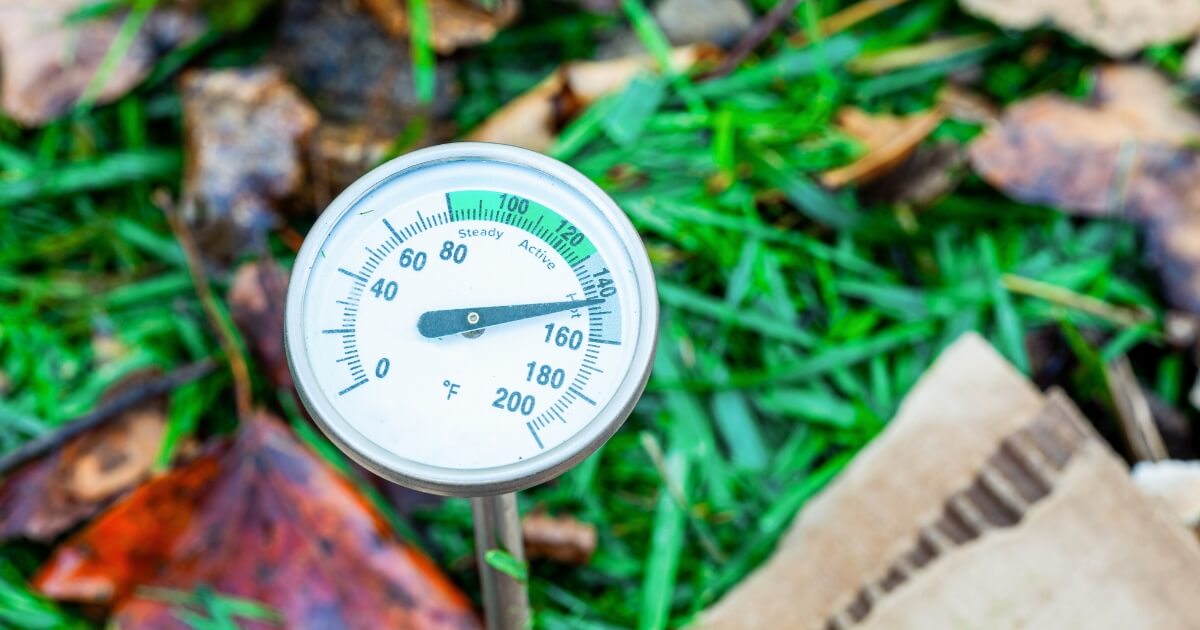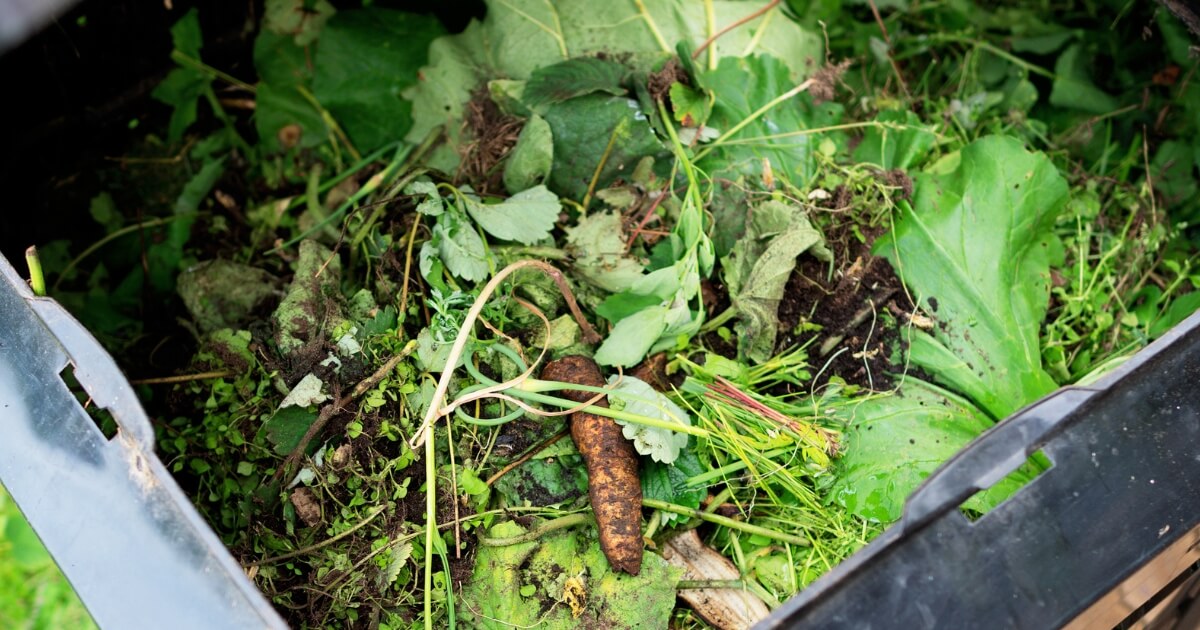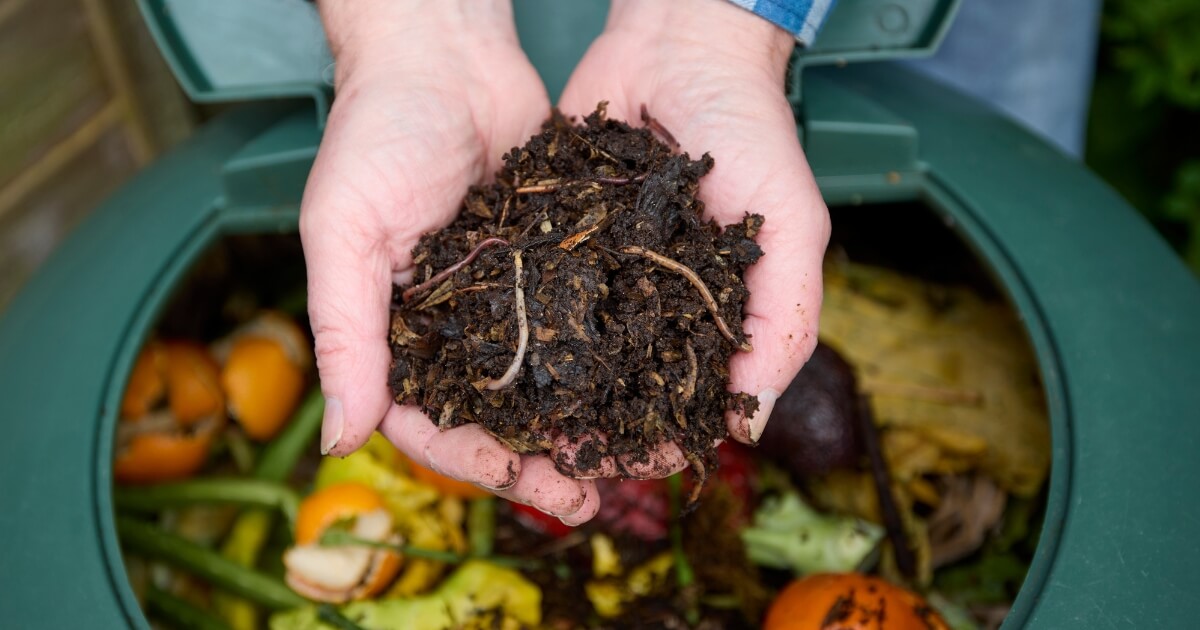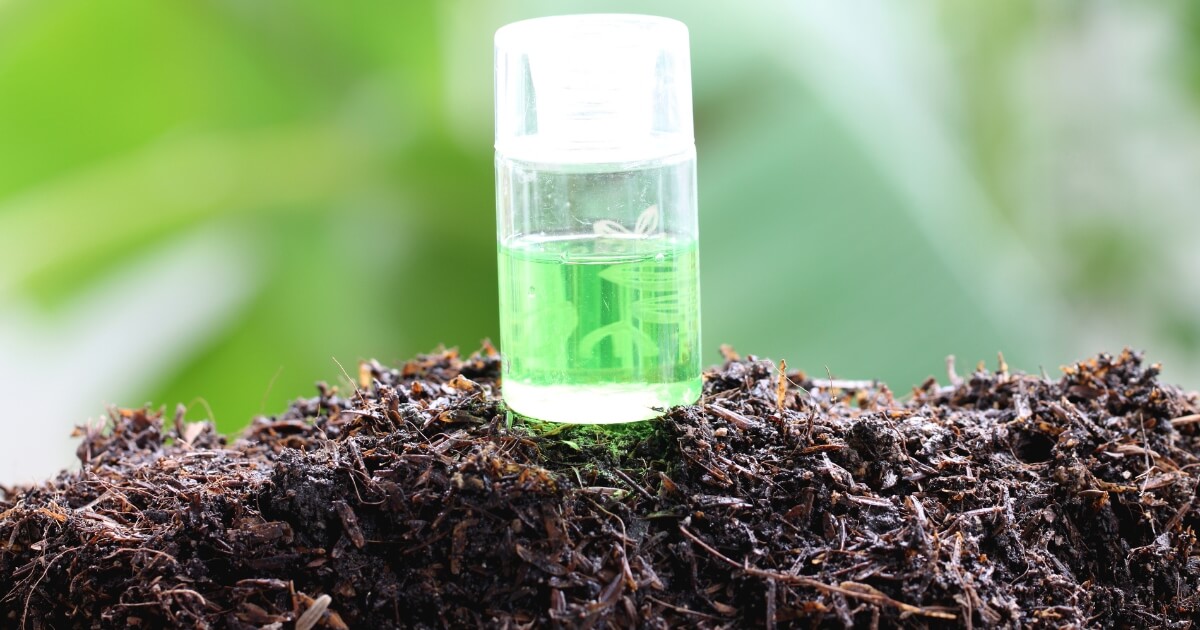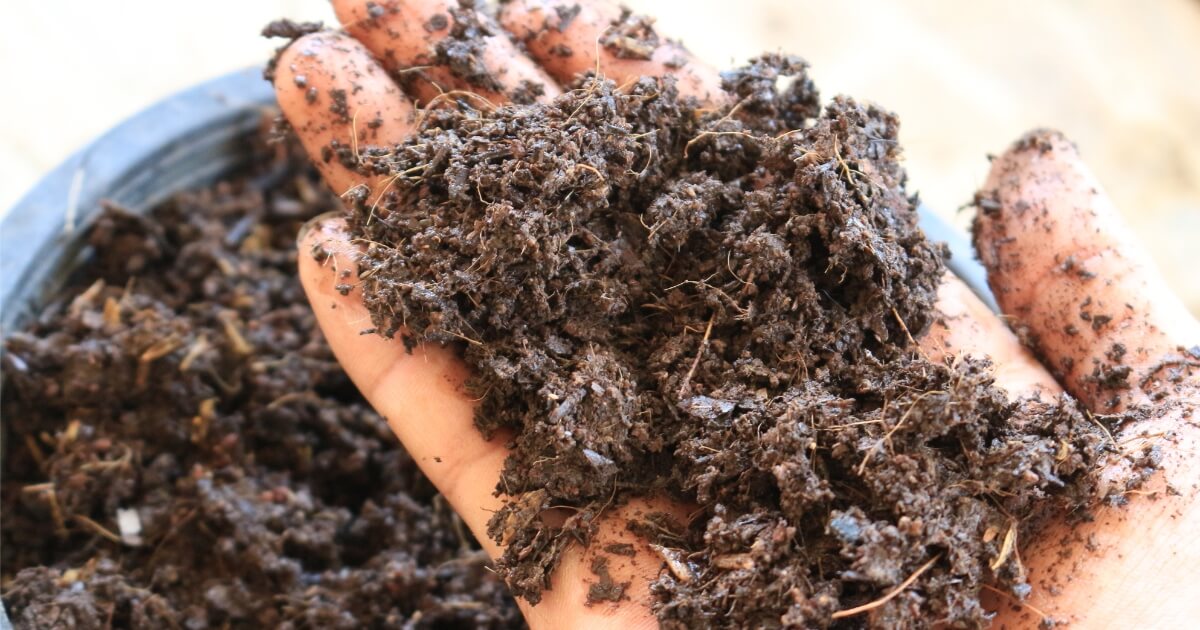Do you love roasted whole peanuts and wonder if you can toss the peanut shell waste into your home composting system?
The excellent news is that peanut shells are a great addition to compost, but they require preparation before adding them into your bin or pile.

To learn everything about composting peanut shells, including pros and cons and how-to steps, you only need to read this short guide.
Adding new compost ingredients can sometimes backfire, so stay here to learn the best way to compost peanut shells to create a rich soil amendment for your garden’s needs!
Can Peanut Shells Be Composted?
Yes, you can compost peanut shells. The shells, or hulls surrounding the nut, will be a brown ingredient in your composting system. Carbon-rich brown material is an essential part of a well-running composting process.
The microorganisms within a compost pile rely on carbon ingredients and nitrogen-rich “green” components to provide a source of energy to process and break down the materials continually.
There are some concerns a fungus some peanut shells harbor, called Southern Blight, may overwhelm a compost pile and make the finished product unsafe for garden plants.
Luckily, this issue is mainly an issue for people who use peanut shells as mulch, and those peanuts came from a home or small local garden that doesn’t treat their crops with fungicides.
Inside compost, any fungus on the shells will die off as temperatures rise within the pile.
Another point about Southern Blight is that commercially sold whole-shell peanuts from grocery stores mostly eradicate the fungi during production, so there’s little chance it’ll affect your compost.
Pros And Cons Of Composting Peanut Shells
Let’s look at the benefits of composting peanut shells and list out the cons, so you can decide if they’re worth adding to your compost.
Pros:
- Peanut shells offer valuable carbon content to offset green ingredients
- Shells are rich in phosphorus, nitrogen, and potassium
- Shells are bulky yet lightweight, which aids in compost aeration
- Recycling the shells is good for the environment
- Dry shells can aid in fixing overly wet compost quickly
Cons:
- Requires preparation before adding to compost for best results
- Southern Blight fungus can be a concern for cold composting systems
- Shells can harbor or attract nematodes which may survive the composting process and harm garden plants
I feel composting peanut shells is worth the effort, as it reduces kitchen waste going to landfills.
The shells adding nutrients to your compost enriches the final medium, so your plants can grow bigger and healthier.
How Long Does It Take For Peanut Shells To Decompose?
The length of time it takes for peanut shells to decompose depends on the size of the hull and environmental conditions.
You should expect a whole shell to take anywhere from eight to 24 months to decompose when left outdoors. Of course, the hulls will break down faster in regions that rain more often and take longer in arid locations.
Within a well-tended hot compost pile, whole peanut shells can still take five to ten months to become unrecognizable.
If you use a cold composting system, it can take anywhere from nine to 18 months to see a full breakdown of whole peanut hulls.
If you crush or break up your peanut shells before adding them to your composting system, it reduces processing time to two to six months.
When you add smaller bits to your compost, they integrate better with the other ingredients, and microbes have an easier time digesting the moist shell fragments.
How To Compost Peanut Shells
For the fastest processing of peanut shells in compost, follow these simple steps:
Step 1. Inspect Peanut Shells for Disease
Spread out your peanut shells on a tray and quickly inspect them for any spots that appear dark, white, or odd.
Toss any shells that appear discolored or soft into your regular trash, as these may suffer from a disease that could upset your compost.
Rarely will you find an issue with many of your peanut shells, and very few that you purchase from a restaurant or store will have spots that draw attention since producers weed them out before packaging.
Step 2. Crush or Chop the Peanut Shells
For best results composting peanut hulls, you need to break them up.
You can crush the shells by smashing them with a rolling pin or kitchen mallet. You can chop smaller batches with a food processor, or you can step on them.
Making your peanut hulls smaller will increase the speed of decomposition, which is helpful when you eat peanuts often.
Step 3. Soak the Peanut Shells
Once you crush up all your peanut shells, you’ll want to soak the hulls in water for 12-16 hours.
If the peanuts were salted, you might want to increase the soak time by a few more hours.
Soaking the shells is beneficial in two ways. The first is to remove the excess salt from the shells so it doesn’t interfere with the health of beneficial compost microbes.
For salty shells, you’ll want to change the water every four hours to help pull as much salt as possible from the hulls.
The second benefit of soaking peanut shells is that it adds moisture. This is because peanut hulls can absorb a lot of liquid.
If your compost mixture is “normal,” adding in even a few cupfuls of dry peanut shells can upset the moisture balance and impact the heat levels and microbe action.
Step 4. Add the Peanut Shells to the Composter
After soaking, you are now ready to add the peanut shells to the compost.
To ensure the compost doesn’t get too wet, it’s best to mix the moist peanut shells with the same ratio of other carbon ingredients like dry leaves or straw.
Add this blend of hulls and other carbon elements to your kitchen compost bin, pile, or compost tumbler. Balance the bin with one part green compost ingredients such as fruit or vegetable scraps for every two to three parts shells/carbon material.
Can you add peanut shells to a vermicomposting system?
Yes, worms love peanut shells when you treat them with the steps above, and they’ll quickly devour the moist fibrous hull and leave behind worm castings.
Step 5. Tend to the Compost Pile
Regularly tending to your compost helps maintain the correct oxygen, moisture, and heat level, allowing the microorganisms to thrive and break down the material.
You must turn the compost every four to seven days to keep the action high so that you can recycle those peanut shells and other ingredients into a garden amendment.
Inspect your composter every few days to ensure the contents aren’t getting soggy. Wet compost will stink, and the whole batch can spoil if you don’t fix the problem right away by adding more dry carbon-rich material and mixing the contents well.
Keep working your compost until it turns into a dark brown mixture that resembles loose dirt with no discernable shreds of the peanut shells or other ingredients. Now it’s ready for use.
In Summary
Composting is a beautiful process that allows you to recycle household waste such as peanut shells, so you don’t have to send it off to the landfill.
I hope this guide encourages you to compost peanut hulls, and you follow the easy steps above for the best way to compost peanut shells for fast and reliable results!
